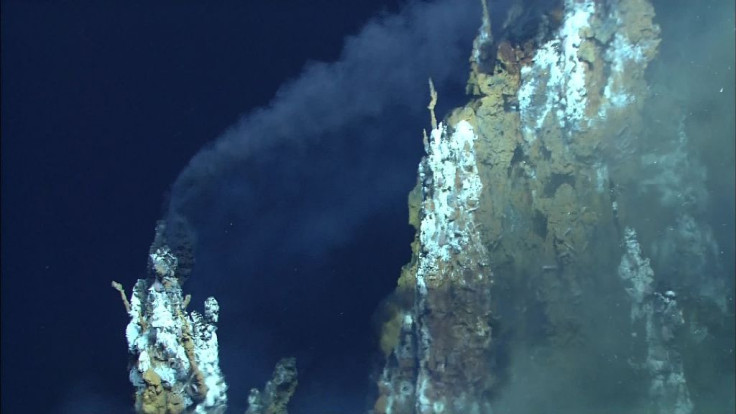Bacteria Near Deep-Sea Hydrothermal Vents Battle Viruses That 'Hijack' Them For Reproduction

Deep-sea bacteria, living near hydrothermal vents, are challenged by viruses that infect bacterial cells to hijack an ingredient, which is important for the viruses rapid reproduction, a new study by researchers at the University of Michigan reveals.
After infecting the bacterial cells to seize tiny globules of elemental sulfur stored inside the cells, the viruses force the bacteria to burn the sulfur reserves, and then use the unleashed energy to replicate, while filling the bacterial cells to the bursting point.
“Our findings suggest that viruses in the dark oceans indirectly access vast energy sources in the form of elemental sulfur,” Gregory J. Dick, a marine microbiologist and oceanographer at the University of Michigan, said Thursday in a statement.
According to the study, published in the journal "Science," viruses are key players in the thriving ecosystems that huddle around deep-sea hydrothermal vents. The study also said the viruses “serve as a reservoir of genetic diversity that helps shape bacterial evolution.”
While similar microbial interactions have been observed in shallow ocean waters between photosynthetic bacteria and the viruses that prey on them, this is the first time that such a relationship has been seen in a chemosynthetic system in which the microbes rely solely on inorganic compounds as a source of energy, rather than sunshine.
Dick and his team of researchers collected DNA from deep-sea microbes in seawater samples from hydrothermal vent sites located in the western Pacific Ocean and the Gulf of California. After examining the DNA, they found genes from five previously unknown viruses, along with the common sulfur-consuming bacterium called SUP05.
When combined with results from previous studies, the researchers found that the viruses force SUP05 bacteria to use viral SUP05-like genes to help process stored globules of sulfur.
“We suspect that these viruses are essentially hijacking bacterial cells and getting them to consume elemental sulfur so the viruses can propagate themselves,” Karthik Anantharaman, a doctoral student in Dick's lab at the Department of Earth and Environmental Sciences, said.
According to researchers, the new findings will help researchers better understand how marine biogeochemical cycles, including the sulfur cycle, will respond to global environmental changes such as the ongoing expansion of dead zones.
© Copyright IBTimes 2024. All rights reserved.












